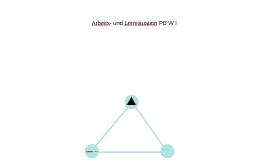Structured products are products that combine a traditional financial investment, such as bonds or stocks, with derivatives. A structured product is in finance a financial instrument issued by a bank or an insurance company generally composed of two elements, the first ensuring capital protection. The second riskier allows optimizing the return of the Strukturierte Produkte .
Presentation
A structured product is the combination of several financial products that, when combined, offer a profitability profile adapted to certain investor needs. The value of a structured product depends directly on that of a benchmark variable, called the underlying, which can be an asset, a market indicator, a basket of values, an investment strategy or any other variable.
Their lifespan is limited and it is at the maturity of the product that the investor recovers his capital, increased or decreased depending on the performance of the underlying asset. Depending on the specifics, structured products are issued in various legal forms: they can be either debt securities or fund shares.
What are the advantages of structured products?
Structured products have the risk or reward characteristics of different financial instruments. There are generally two elements in a structured investment, an element of capital protection, in general, a bond product and an element at risk which makes it possible to achieve high performances. Any financial instrument can fall into this category a share, an index, currencies or commodities.
Capital protection
Guaranteed or protected capital products concern these structures where the repayment of capital at maturity is guaranteed, apart from the issuer risk, while giving a certain exposure to the performance of the underlying asset.

Because the investor takes relatively little risk through this type of structured product, the expected return is also low. Generally, capital-guaranteed products give exposure to low volatility underlying or a basket of underlying. Their performance should be compared to other products with a similar risk or return profile, such as bonds.
The main advantages
The investment can be indexed, for example, on the performance of a basket of stocks or a stock market index. Its performance is established in a specific framework, determined in advance. Offering a capital protection threshold, structured products can, therefore, make it possible to keep all or part of the capital at maturity.
Structured product: definition and usefulness
Derivatives and structured products should not be confused. The first futures, swaps, option contracts are listed on the markets and allow you to hedge or speculate on the spreads of an underlying stock, bonds, currencies, etc. Unlisted, the latter are synthetic products that most often combine a fixed-term investment and derivatives. Their price is determined by complex mathematical models.
To conclude
Structured products represent an attractive solution for investors wishing to diversify their assets, invest in asset classes that are usually less accessible emerging markets, volatility or correlation products while limiting the risk of losing their capital.
A structured product is a product designed by a bank by combining several financial products that, once assembled, generate a profitability profile adapted to the needs of certain customers. It is often the combination of a bond party and sophisticated financial instruments options, swaps, etc. that make these products incomprehensible to the majority of investors.
